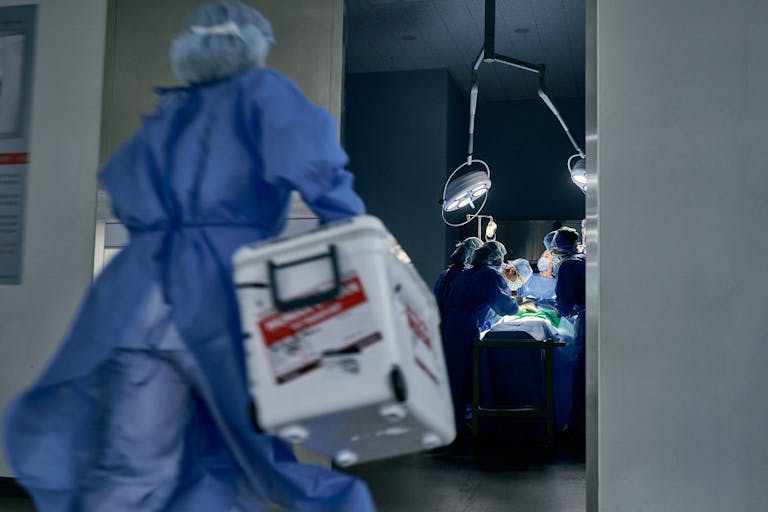
Australian woman donates organs after self-administering deadly suicide drugs
Cassy Cooke
·
Medically necessary abortions are an abortion industry myth
With the fall of Roe v. Wade, the abortion industry has quickly seized upon the idea that laws protecting preborn children are unjust, claiming that women might need an abortion for medical reasons. This myth continues to be used as an excuse to keep induced abortion legal through all nine months of pregnancy.
Earlier this month, Nebraska lawmakers introduced a heartbeat bill, which would protect preborn children from abortion after that child’s heartbeat can be detected. Though the bill does include exceptions for rape, incest, or to save a woman’s life, abortion proponents are arguing that these exceptions are not broad enough.
In addition, the New York Times claimed that exceptions aren’t often granted, though every single pro-life law includes them for medical necessity. “Having the legal right on the books to get an abortion and getting one in practice are two distinctly different things,” Laurie Bertram Roberts, the executive director of the Mississippi Reproductive Freedom Fund, told the Times. Many doctors, they said, refuse to commit abortions.
The Times gave examples of a woman pregnant with triplets who wanted a “selective reduction” abortion, and a woman whose child was predicted to die soon after birth. Neither of these situations is an urgent medical emergency in which a woman would need an abortion to save her life; in fact, these situations serve to strengthen the argument that doctors are now less able and willing to perform legitimate medicine because of legalized abortion. Instead of working to address a woman’s health care needs, the simpler solution for some doctors is merely to commit an abortion. Yet that doesn’t make these abortions medically necessary — and the doctors interviewed by the Times seemed to be conflating the need for abortion with medical neglect.
“When a patient’s water breaks prior to viability, this can have devastating neonatal outcomes and many infants do not make it to viability,” OB/GYN Mary Kinyoun told WOWT. “Additionally, a pregnant woman can suffer devastating infections. So I ask you, how close to death, do we allow pregnant people to become before we perform a life-saving abortion?”
“What gets put out to the press is: ‘We have exceptions for fetal abnormalities and we have exceptions for maternal life,’” Lori Day, a doctor in Indiana, said. “When you get into the nitty-gritty details of it, you actually don’t.”
Yet women facing a medical emergency do not need induced abortion. Premature delivery, which is sometimes necessary, is not an induced abortion, as the intent of an induced abortion is to end the life of the child. As the American Association of Pro-Life Obstetricians and Gynecologists (AAPLOG) explained (emphasis added):
There are times when separating the mother and her unborn child is necessary to save the life of the mother, even if the unborn child is too premature to live. In those tragic cases, if possible the life of the baby will be attempted to be preserved, and if not possible, the body of the unborn child is treated with respect, recognizing the humanity of the life which is lost in the separation. In contrast, the purpose of an induced abortion is to produce a dead baby.
The Centers for Disease Control and Prevention defined legal induced abortion as an “intervention performed by a licensed clinician (e.g., a physician, nurse-midwife, nurse practitioner, or physician assistant) that is intended to terminate a suspected or known ongoing intrauterine pregnancy and produce a non-viable fetus at any gestational age.”

In recent months, the media has increasingly tried to claim that abortion is needed for medical reasons, when the cases cited are, in actuality, cases of medical neglect. Cases of pre-eclampsia, an incompetent cervix, and a missed miscarriage were used to attack pro-life laws, yet each of them could have — and should have — been remedied by legal medical procedures… not by induced abortion.
In the case of the woman with pre-eclampsia, the doctor in that case sent the woman on a six-hour ambulance ride to get an abortion, rather than treating her with standard care. According to Mayo Clinic, standard care would include medications to lower her blood pressure, or an emergency delivery (not intentional killing) of the baby in extreme cases.
A dilation and evacuation abortion, or D&E, is the abortion procedure most commonly used in the second trimester – the stage most often referred to in media stories of life-threatening situations. This procedure has at times been done as a same-day procedure (which greatly increases risks for the mother), but typically takes several days to complete, and involves dismembering a preborn child limb from torso.

An emergency c-section, by contrast, takes about an hour.
Induced abortion — the intentional taking of a preborn child’s life — is not medically necessary. A child’s unintentional (albeit possibly expected) death due to legitimate medical treatment is not the same thing. The goal of induced abortion is always, every single time, to take a preborn life, and the stories cited by the media have a pro-abortion agenda that simply serve to hide the truth. Abortion is not needed to save women’s lives.
Live Action News is pro-life news and commentary from a pro-life perspective.
Contact editor@liveaction.org for questions, corrections, or if you are seeking permission to reprint any Live Action News content.
Guest Articles: To submit a guest article to Live Action News, email editor@liveaction.org with an attached Word document of 800-1000 words. Please also attach any photos relevant to your submission if applicable. If your submission is accepted for publication, you will be notified within three weeks. Guest articles are not compensated (see our Open License Agreement). Thank you for your interest in Live Action News!

Cassy Cooke
·
Analysis
Cassy Cooke
·
Politics
Cassy Cooke
·
Analysis
Cassy Cooke
·
Analysis
Nancy Flanders
·
Newsbreak
Angeline Tan
·
International
Cassy Cooke
·
International
Cassy Cooke
·
Analysis
Cassy Cooke
·
Politics
Cassy Cooke
·
Analysis
Cassy Cooke
·